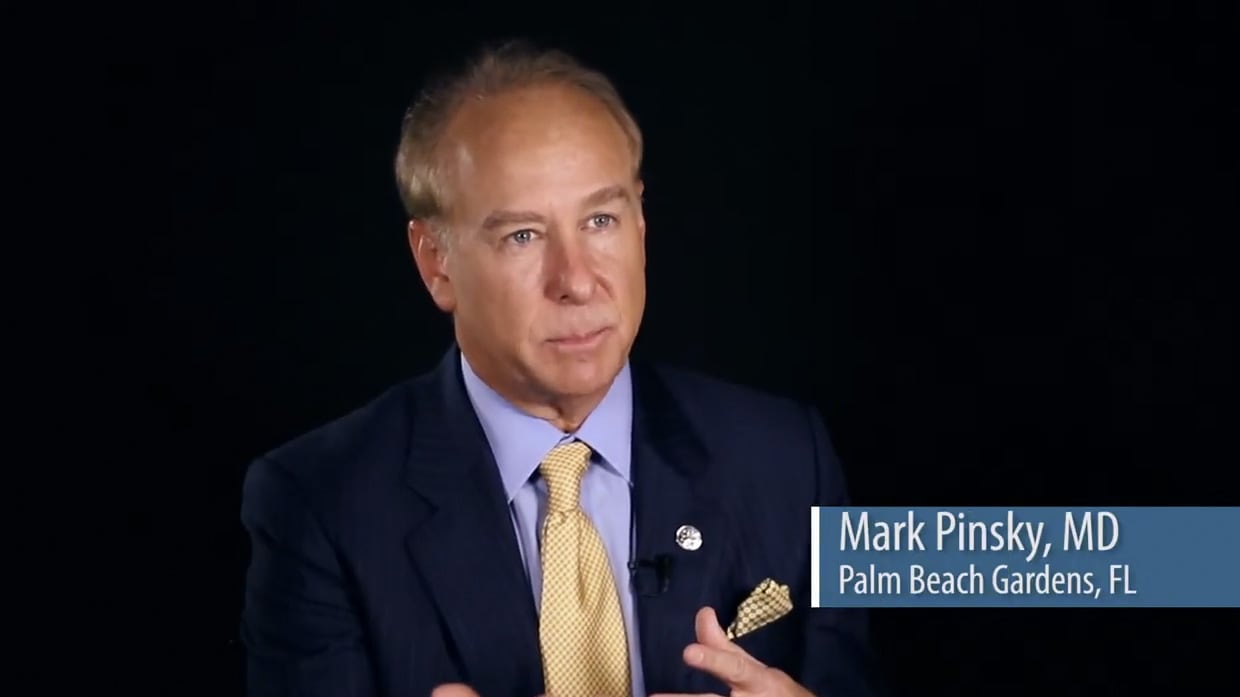Even the most successful breast surgeries can require another procedure down the road. Breast implants are mechanical devices and like all implantable mechanical devices, there will be wear and tear. Breast implants may not last a lifetime, and patients may require additional surgery in the future. In addition, the female body undergoes changes throughout life and a woman’s needs years ago may not be the same today. No matter your reasons for pursuing the procedure, the decision to undergo breast revision is very personal and our physicians have the skill and experience to help you navigate the process.
*This video contains nudity

Reasons for Breast Revision Surgery
Capsular Contracture
Twenty three percent of all primary (first time) breast surgery patients have a revision. The most common reason for breast revision is capsular contracture, or the hardening of the breast implant due to contracture of the scar tissue around the breast implant. This most often occurs in the first nine months following surgery, but is known to happen many years later. The leading theory as to why this happens is bacterial contamination around the implant — not enough to cause an infection, but enough bacteria to release enzymes that cause an inflammatory reaction in the scar tissue. There are various procedures that can be employed at the time of surgery to virtually eliminate this occurrence, but not all plastic surgeons utilize these procedures. At our Palm Beach-area practice, plastic surgeon Mark Pinsky, MD has lectured all over the world about these techniques and uses them during all of his breast surgeries.
Treatment of capsular contracture is aimed at resterilizing the pocket where the implant resides. This is done by removing the breast implant, as well as the scar tissue around the implant. Very high-powered microscopic analysis has shown the bacteria on both the implant and the scar tissue. The bacteria are encased in a protein “cocoon,” which makes it difficult for antibiotics to reach the bacteria, hence it must be removed.
Once removed, the area where the implant and scar tissue were located is irrigated under pressure with an antibiotic saline solution. A new implant then may be inserted along with a drain. Most of the time, a product by the name of Strattice® or Alloderm® is stitched into the pocket to further reduce the incidence of a recurrent capsular contracture.
Implant Malposition
The second most common reason for revision surgery involves the implant not settling into the optimal positioning, called implant malposition. This may be an implant that drops on one side but not the other, an implant that drops too far, or even an implant that ends up too far under the arm. Rarely, an implant may drop too close to the midline of the chest resulting in loss of the cleavage. Sometimes, the reason for implant malposition is technical. In other words, the technique employed by the plastic surgeon. Other times, it’s because the implant migrates over time. Not realized by most patients, surgeons do not stitch an implant into position. A pocket is created and the implant settles into position over time. This settling process may not be identical between the two breasts.
Repositioning a breast implant takes significant surgical precision. Usually, the scar tissue needs to be stitched down in one area of the pocket called a capsulorrhaphy (the area where the implant resides) while the opposite part of the pocket needs to be opened — called a capsulotomy. The implant, which is a circle in most cases, then moves into a new position. Oftentimes, it’s necessary to reinforce the closed portion of the pocket with a mesh-like material, which adds strength to the closure to offset the weight of the implant.
Absence of a Breast Lift
The third most common reason for breast revision is the failure of the original surgeon to perform a breast lift. Many times — understandably — the patient doesn’t want the scar associated with a breast lift only to find out after the breast implant settles that their natural breast looks like it falls off the breast implant. When undertaking this type of a revision, many times the implant may remain undisturbed while a breast lift is performed. There are many types of breast lift surgery and many different ways to perform each type. Dr. Pinsky is published in this very subject. There are a variety of ways to minimize scarring during this procedure. Breast augmentation with a breast lift requires a great deal of experience to create beautiful, natural-looking breasts. We encourage patients to gather more information on breast lifts within our website.
Size Changes
Interestingly, exchanging a breast implant to attain a size change is not very common. Sizing concerns can be virtually eliminated with our sophisticated 3D imaging technology. At Pinsky Plastic Surgery, we offer a VECTRA® 3D analysis to show a prospective patient what they might look like with 95% accuracy. If a size change is requested, it’s not surprising that the request is usually to go larger. That said, it’s Dr. Pinsky’s experience that patients who have had their implants for many years often request smaller implants.
Some examples of when a patient may request a change in implant size include weight gain or loss, pregnancy, or even age. In some cases, changes in lifestyle as a woman ages might warrant a smaller size or even breast implant removal. In this latter case, the procedure is often coupled with a breast lift, but not always. While many women are concerned during their initial surgery that they don’t want to go too large with their breast augmentation, once the swelling subsides they may wish that they had.
Of course, occasionally breast revision surgery is required to repair a damaged implant that has deflated or ruptured.
Implant Exchange
Another contributing factor can be a preference in implant type. Many women change their mind after spending some time with their breast implants and feel a switch from saline to silicone or vice versa would be better for them. This may be to remove a rippling effect in the breast implant, or simply to have a more natural feel.
One of the more unfortunate reasons for a breast revision surgery is poor surgical work. Women who may not be happy with the results from a previous breast augmentation will seek out more experienced plastic surgeons to fix the resulting issues from that first surgery. And now, with so many different projections and types of cohesive gels available, many undesirable results can be corrected.
Regardless of the reasons for seeking out breast revision surgery, it is important to know as much as possible about breast revision procedures and for the patient to arrive at their consultation with a list of questions to ask the cosmetic surgeon. Education is the best tool in having a successful procedure.
Breast Revision Results
How Should I Prepare for Breast Revision Surgery?
It’s vital that patients prepare for their plastic surgery just as much as our surgeons prepare. Prior to the procedure, your physician will give you a list of instructions to ensure the best possible surgical outcome. It is important that you follow these instructions to the letter!
One of the biggest things a patient can do to ensure the success of their breast revision is to be open and honest with their doctor during the consultation process. A potential patient needs to share their medical history openly. If the operating surgeon knows about a patient’s medical history, including such things as high blood pressure or bleeding and blood clotting issues, the surgeon can better plan for the procedure.
It is also important to ask lots of questions and set expectations reasonably. Managing expectations is key to success; revision surgery can be very complex and somewhat unpredictable by nature. By engaging in a dialogue well in advance of a cosmetic procedure, a patient is better informed going into surgery. Patients who are informed and have reasonable expectations are more satisfied with their final results.
For individuals who smoke, it’s important to stop smoking as soon as possible before your procedure to help ensure the success of the cosmetic procedure and recovery period. It is clinically proven that smoking can delay healing. A delay in healing can result in scarring, and also increase the chances of bleeding from the procedure. In addition, patients are encouraged to eat a healthy diet, drink lots of water, and be in their best physical condition before going into surgery.
Prior to surgery, a patient will need to make other lifestyle changes as well, such as avoiding taking aspirin or products containing ibuprofen. These products present challenges to normal blood clotting. This can increase the risk of bleeding and bruising from breast surgery. Tylenol® and products containing acetaminophen are safe.
If a patient is prescribed medications by their primary care physician, they should continue to take them; however, any vitamins and herbal supplements will have to stop prior to surgery. Our doctors will advise when it’s safe to resume taking these supplements post-surgery.
The patient should also avoid alcohol for one week prior to and after surgery, and try to decrease their salt intake. Even moderate levels of salt consumption can increase swelling. Most of all, drink plenty of water. Water can flush harmful toxins out of our system and can help our body to reach top form. For the recovery process to be the best it can be, drink plenty of water leading up to and after a cosmetic procedure.
What Can I Expect From Recovery After Breast Revision Surgery?
Recovery from a breast revision will depend on the type and extent of the procedure, and vary between patients since each revision surgery has its own set of unique variables. However, a patient can expect some discomfort, which can be managed with pain medication. Sometimes a drain may be required, most of the time it will not. Sometimes a bra will be used, other times not. And sometimes, antibiotics will be necessary and occasionally not. Most patients will be able to go back to work in a few days to a couple of weeks, and engage in full activities like exercise in three to six weeks.
Questions? Our physicians are ready to answer all your questions about the breast revision process and what you can expect from the procedure. Please contact Pinsky Plastic Surgery to schedule a consultation or to learn more.
